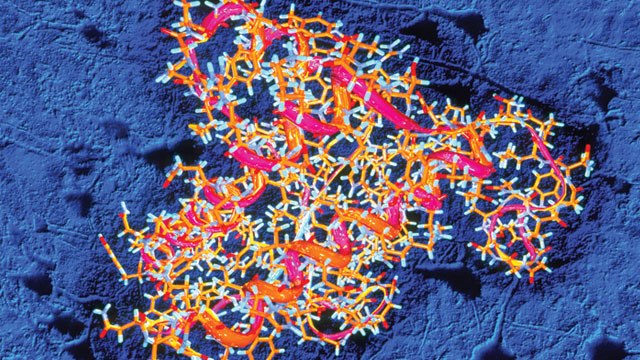|
By Alexander Bernstein
Especially following the recent mid 2000’s outbreak of Mad Cow Disease in Britain that saw nearly 200 thousand cattle and more than a hundred people infected, prions, the proteins associated with this disease, have a primarily served a boogeyman role in the media. Yet, as per a recent article published in Public Library of Science (PLOS) Biology, it appears that these proteins may have been misunderstood. Although some prions are in fact responsible for stimulating protein misfolding and thereby leading to destruction of appropriate cellular function in what is typically an irreversible and fatal process, the word done by Stowers Institute for Medical Research demonstrates that it is wrong to brand all prions under this same caustic banner. In his “The Proteins behind the Persistence of Memory”, Richard Robinson notes “At its most fundamental level, a memory is an increase in synaptic strength that persists over time.” With that in mind, he continues to point out in order to establish this synaptic effect specific protein function is required. From what is currently understood, those proteins are called Cytoplasmic Polyadenylation Element Binding (CPEB) proteins. Remarkably, these apparently fundamental proteins are, in their structure, very prion-like in that, as Robinson continues “Their conversion from monomers to oligomers, via stacking of their prion domains, is essential to the long-term maintenance of synaptic memory.” Indeed, it has been demonstrated that these proteins have no part in disease causing processes, as some of their cousins seem to do, but rather play a role in essential cellular function. Chief investigator of the PLOS Biology published research, Kausik Si points out that while much of the machinery in cells is altered and destroyed over time, these prion like proteins serve the role of stabilizing memories likely since prion folding is a self contained process and does not require external stimuli. Conducting their research on fruit flies, Si and his team demonstrated that the prion-like Orb2 protein is required for long-term memory since flies with a mutated version of this protein were able to learn new behaviors, but, unlike their counterparts with a normal version of the protein, were unable to practice these learned behaviors after a short period of time. As Si notes in the PLOS Biology article, “Beyond a day, the memories become unstable. By three days, the memory has completely disappeared.” Demonstrating the function of these proteins is just the beginning. Si and his colleagues are already planning to take their work further by examining how this prion function is regulated. Such a concept is intriguing because it is still unknown how prions are regulated. However, our fundamental understanding of memories and the fact that not all are long term seem to suggest that some regulatory processes must exist, and they determine when protein folding occurs. Thus far, Si has determined that Orb2 protein exists in two forms in the fruit fly – Orb2A and Orb2B. Orb2A is found in only certain specific neurons and degrades very quickly. Si explains that “When Orb2A binds to the more abundant form, it triggers conversion to the prion state, acting as a seed for the conversion.” This seed then is self-sustaining, and the team has demonstrated is partly regulated by a protein known as TOB, the binding of which stabilizes Orb2A and increases the prion nature. Since similar proteins have been found in both mice and humans, the study of their regulation and function is of utmost importance.
0 Comments
Leave a Reply. |
Categories
All
Archives
April 2024
|

